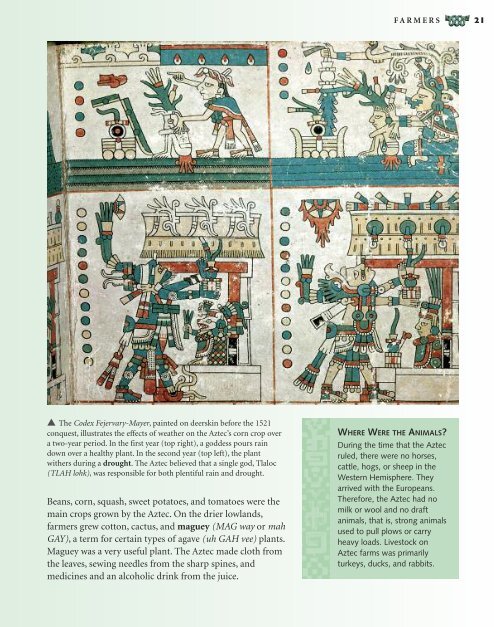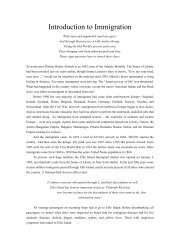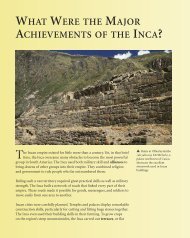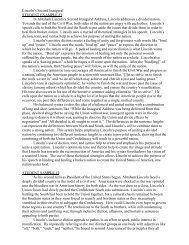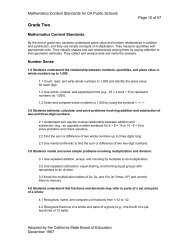You also want an ePaper? Increase the reach of your titles
YUMPU automatically turns print PDFs into web optimized ePapers that Google loves.
F A R M E R S 21<br />
▲ The Codex Fejervary-Mayer, painted on deerskin before the 1521<br />
conquest, illustrates the effects of weather on the <strong>Aztec</strong>’s corn crop over<br />
a two-year period. In the first year (top right), a goddess pours rain<br />
down over a healthy plant. In the second year (top left), the plant<br />
withers during a drought. The <strong>Aztec</strong> believed that a single god, Tlaloc<br />
(TLAH lohk), was responsible for both plentiful rain and drought.<br />
Beans, corn, squash, sweet potatoes, and tomatoes were the<br />
main crops grown by the <strong>Aztec</strong>. On the drier lowlands,<br />
farmers grew cotton, cactus, and maguey (MAG way or mah<br />
GAY), a term for certain types of agave (uh GAH vee) plants.<br />
Maguey was a very useful plant. The <strong>Aztec</strong> made cloth from<br />
the leaves, sewing needles from the sharp spines, and<br />
medicines and an alcoholic drink from the juice.<br />
WHERE WERE THE ANIMALS?<br />
During the time that the <strong>Aztec</strong><br />
ruled, there were no horses,<br />
cattle, hogs, or sheep in the<br />
Western Hemisphere. They<br />
arrived with the Europeans.<br />
Therefore, the <strong>Aztec</strong> had no<br />
milk or wool and no draft<br />
animals, that is, strong animals<br />
used to pull plows or carry<br />
heavy loads. Livestock on<br />
<strong>Aztec</strong> farms was primarily<br />
turkeys, ducks, and rabbits.


